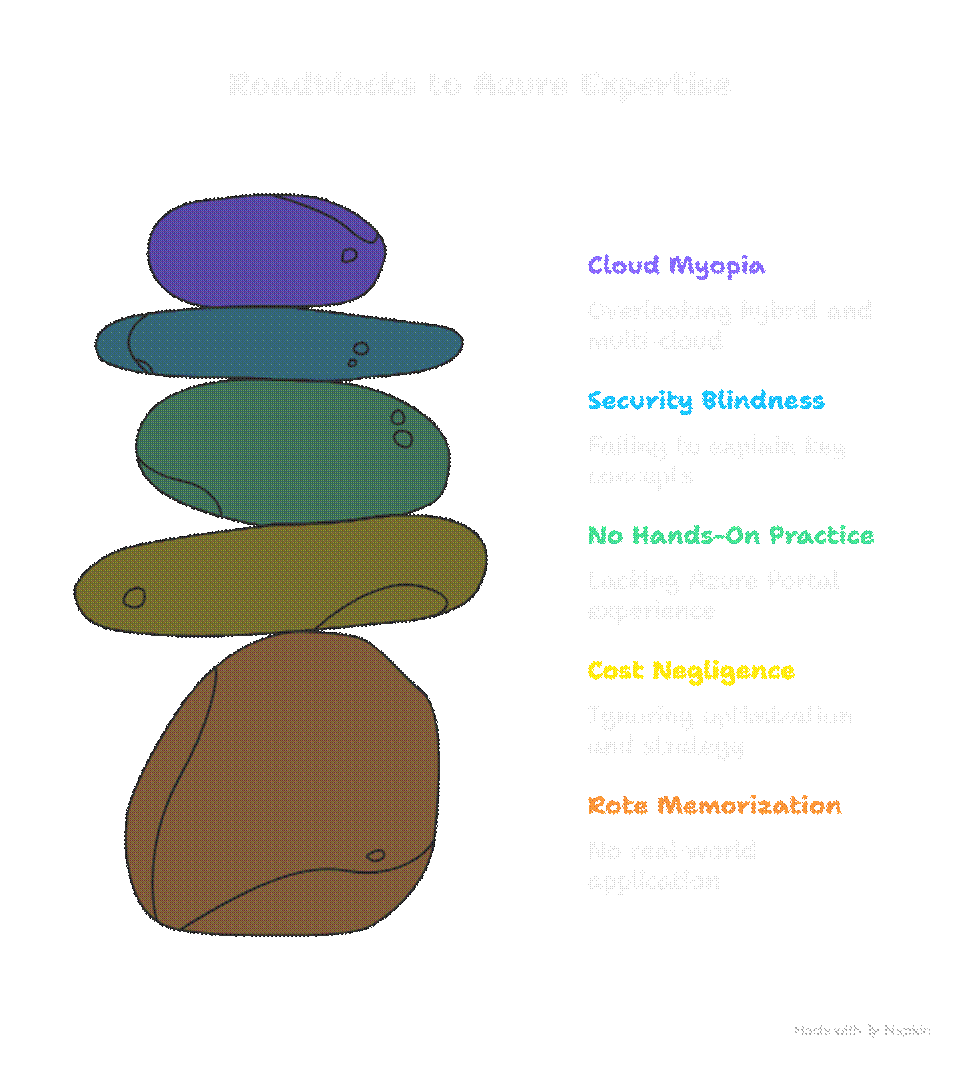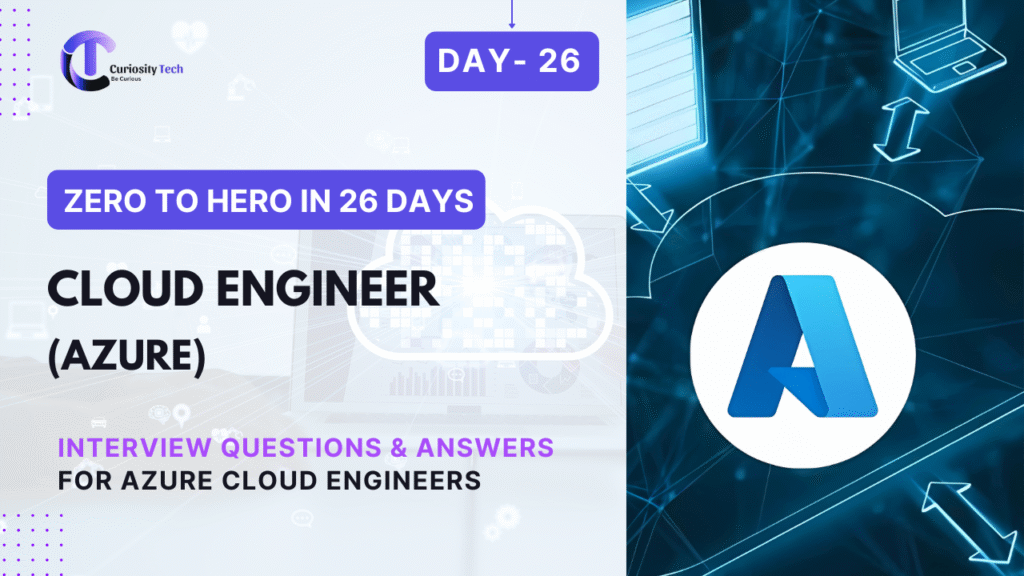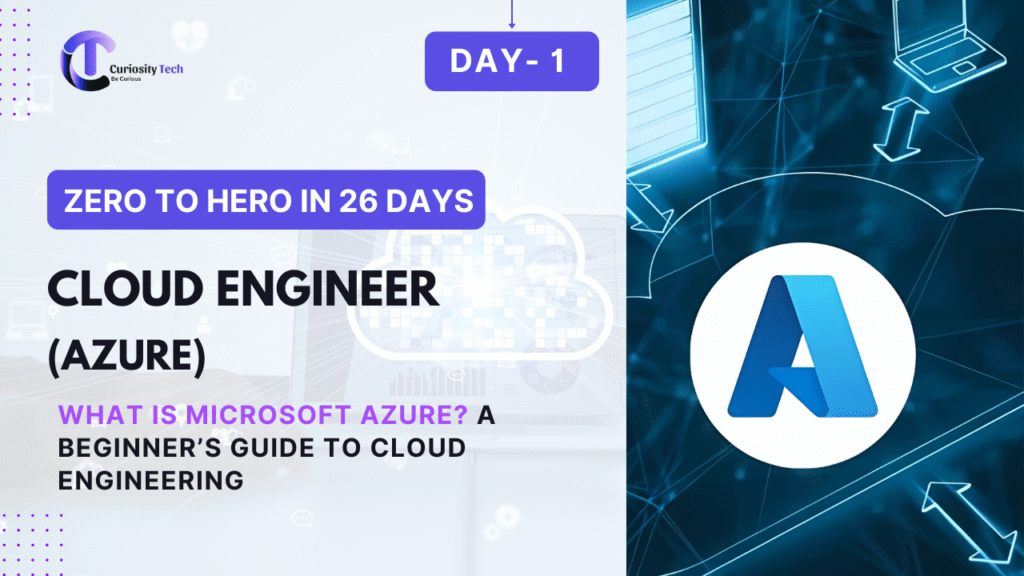Introduction
Preparing for an Azure Cloud Engineer interview requires more than memorizing questions; it demands conceptual clarity, practical experience, and problem-solving skills. Interviewers assess your knowledge of Azure services, architecture, security, DevOps practices, and hybrid cloud solutions.
At curiositytech.in, learners practice hands-on labs, mock interviews, and real-world scenarios to confidently answer technical questions and demonstrate expertise.
1. Core Azure Interview Questions & Answers
Q1: What is Azure and what are its core components?
Answer:
Azure is Microsoft’s cloud computing platform that provides IaaS, PaaS, and SaaS services. Core components include:
- Compute: Virtual Machines (VMs), App Services, Azure Functions, AKS
- Storage: Blob, File, Queue, Table
- Networking: VNets, Load Balancers, Application Gateway, VPN Gateway
- Databases: Azure SQL, Cosmos DB, Managed Instances
- Identity & Security: Azure AD, RBAC, Key Vault
- Monitoring & Management: Azure Monitor, Log Analytics, Sentinel
Expert Tip: Explain use cases for each component and how they integrate in a real enterprise environment.
Q2: Explain the difference between IaaS, PaaS, and SaaS.
Answer:
- IaaS (Infrastructure as a Service): Provides virtualized computing resources (VMs, Storage, Networks). User manages OS and apps.
- PaaS (Platform as a Service): Managed platform for building applications (Azure App Services, AKS). User focuses on code, Azure manages infrastructure.
- SaaS (Software as a Service): Fully managed software (Office 365, Dynamics 365). User uses the software without managing infrastructure.
Practical Insight: Give a real-world scenario, e.g., migrating an on-prem application to Azure App Service (PaaS) versus running it on Azure VM (IaaS).
Q3: What is Azure Resource Group and its purpose?
Answer:
A Resource Group is a logical container that holds related Azure resources (VMs, Storage, Databases) for management, monitoring, and access control.
Best Practice: Group resources based on lifecycle, project, or environment to simplify management and cost tracking.
Q4: Explain Azure Virtual Network (VNet) and Subnet.
Answer:
- VNet: Private network in Azure allowing secure communication between resources
- Subnet: Subdivision of VNet to isolate resources and control traffic
- Supports NSGs, VPN Gateway, ExpressRoute for secure connectivity
Common Mistake: Forgetting to configure NSGs or routing, causing connectivity issues.
Q5: How do you ensure high availability (HA) in Azure?
Answer:
- Deploy VMs across Availability Zones
- Use Azure Load Balancer to distribute traffic
- Replicate databases using Geo-Replication
- Implement auto-scaling for compute resources
Scenario: A SaaS platform serving global users uses multi-region AKS clusters with Azure Front Door to achieve near-zero downtime.
Q6: What is Azure Active Directory and how is it used?
Answer:
- Azure AD is Microsoft’s cloud-based identity and access management service
- Provides SSO, MFA, RBAC, conditional access
- Integrates with on-prem AD for hybrid identity using Azure AD Connect
Practical Tip: Mention user provisioning, service principals, and role assignments in real projects.
Q7: Explain Azure DevOps and its services.
Answer:
- Azure DevOps provides a CI/CD pipeline platform with services:
- Repos: Version control
- Pipelines: Build & release automation
- Boards: Work tracking
- Artifacts: Package management
- Repos: Version control
- Enables Infrastructure as Code and automated deployments
Expert Tip: Highlight experience with Terraform/Bicep integration, automated testing, and monitoring pipelines.
Q8: How do you implement Disaster Recovery (DR) in Azure?
Answer:
- Azure Site Recovery (ASR): Replicates VMs to another region
- Geo-Replication: For Storage and SQL Databases
- Multi-Region Deployment: Active-active or active-passive setup
- Testing: Conduct regular failover drills to ensure recovery objectives
Common Mistake: Ignoring RTO and RPO calculations, leading to inadequate DR planning.
Q9: What are Azure Monitoring tools and their use cases?
Answer:
- Azure Monitor: Collects metrics and logs from resources
- Application Insights: Monitors application performance
- Log Analytics: Queries and analyzes telemetry data
- Azure Sentinel: Security monitoring and incident response
Scenario: Use Application Insights to track API latency in AKS and trigger alerts via Azure Monitor.
Q10: How do you secure Azure resources?
Answer:
- Implement Role-Based Access Control (RBAC)
- Enable Azure Policy for compliance
- Use Key Vault for secrets management
- Enable network security rules (NSGs) and firewall policies
Practical Tip: Explain hybrid scenarios with Azure Arc-enabled servers and compliance enforcement.
2. Common Interview Mistakes

3. Preparation Tips for Azure Interviews

Conclusion
Interviewing as an Azure Cloud Engineer in 2025 requires deep technical knowledge, practical skills, and scenario-based problem-solving. By combining hands-on labs, certifications, project experience, and staying updated with Azure trends, candidates can confidently answer questions and demonstrate expertise to employers. Learners at curiositytech.in are equipped with all these skills, ensuring job-readiness and career success.



